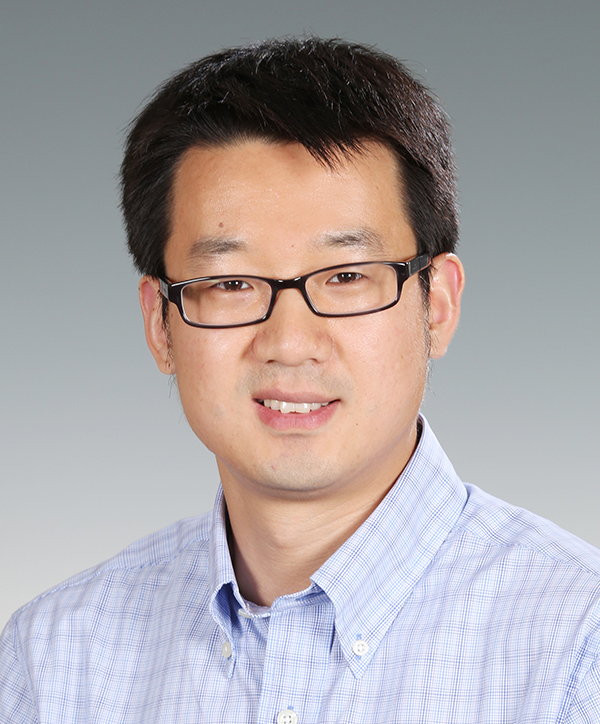Education
2003 - 2008 , Ph.D. , Biological Chemistry , University of Michigan
1998 - 2002 , B.S. , Biochemistry and Molecular Biology , Peking University
Professional Experience
2024.2 - present , Professor, School of Life Sciences, Peking University
2020.2 - 2024.1 , Associate Professor (with tenure) , School of Life Sciences, Peking University
2014.1 - 2020.1 , Assistant Professor (tenure track) , School of Life Sciences, Peking University
2014.1 - present , Principal Investigator, Center for Life Science, Peking University
2011.10 - 2013.12 , Assistant Project Scientist , University of California, San Diego
2009.2 - 2011.10 , Postdoctoral Scholar, Pharmacology , University of California, San Diego (Mentor: Jack Dixon)
Honors and Awards
C.C.Tan Life Science Innovation Award, 2023
National Science Fund for Distinguished Young Scholars, 2023
Gu Xiaocheng Lecture award, 2021
Wuxi AppTec Life Science and Chemistry Award for Outstanding Achievement, 2021
VCANBIO Award for Innovations and Breakthrough in Life Sciences and Medicine, 2020
National Excellent Young Scientists Fund, 2018
Research Interests
1. Immunoglobulins and immunoreceptors
2. Kinases and phosphorylation-related enzymes
Representative Peer-Reviewed Publications
1. Deng, M., Du, S.*, Hou, H., Xiao, J.* (2024). Structural insights into the high-affinity IgE receptor FcεRI complex. Nature Online ahead of print. doi: 10.1038/s41586-024-07864-5.
2. Wang, Y., Su, C., Ji, C., Xiao, J.* (2024). CD5L associates with IgM via the J chain. Nature Communications in press.
3. Ji, C., Shen, H., Su, C., Li, Y., Chen, S., Sharp, T.H., Xiao, J.* (2023). Plasmodium falciparum has evolved multiple mechanisms to hijack human immunoglobulin M. Nature Communications 14:2650.
4. Li, Y., Shen, H., Zhang, R., Ji, C., Wang, Y., Su, C., Xiao, J.* (2023). Immunoglobulin M Perception by FcμR. Nature 615:907-912.
5. Cao, Y.*, Yisimayi, A., Jian, F., Song, W., Xiao, T., Wang, L., Du, S., Wang, J., Li, Q., Chen, X., Yu, Y., Wang, P., Zhang, Z., Liu, P., An, R., Hao, X., Wang, Y., Wang, J., Feng, R., Sun, H., Zhao, L., Zhang, W., Zhao, D., Zheng, J., Yu, L., Li, C., Zhang, N., Wang, R., Niu, X., Yang, S., Song, X., Chai, Y., Hu, Y., Shi, Y., Zheng, L., Li, Z., Gu, Q., Shao, F., Huang, W., Jin, R., Shen, Z.*, Wang, Y.*, Wang, X.*, Xiao, J.*, Xie, X.S.* (2022). BA.2.12.1, BA.4 and BA.5 escape antibodies elicited by Omicron infection. Nature 608:593-602.
6. Du, S., Cao, Y., Zhu, Q., Yu, P., Qi. F., Wang, G., Du, X., Bao, L., Deng, W., Zhu, H., Liu, J., Nie, J., Zheng, Y., Liang, H., Liu, R., Gong, S., Xu, H., Yisimayi, A., Lv, Q., Wang, B., He, R., Han, Y., Zhao, W., Bai, Y., Qu, Y., Gao, X., Ji, C., Wang, Q., Gao, N., Huang, W., Wang, Y., Xie, S.X.*, Su, X.-d.*, Xiao, J.*, Qin, C.* (2020). Structurally resolved SARS-CoV-2 antibody shows high efficacy in severely infected hamsters and provides a potent cocktail pairing strategy. Cell 183:1013-1023.e13.
7. Wang, Y., Wang, G., Li, Y., Zhu, Q., Shen, H., Gao, N., Xiao, J.* (2020). Structural insights into secretory immunoglobulin A and its interaction with a pneumococcal adhesin. Cell Research 30:602-609.
8. Li, Y., Wang, G., Li, N., Wang, Y., Zhu, Q., Chu, H., Wu, W., Tan, Y., Yu, F., Su, X.D., Gao, N., Xiao, J.* (2020). Structural insights into immunoglobulin M. Science 367:1014-1017.
9. Yang X, Zhu M, Lu X, Wang Y, Xiao J. * (2024). Architecture and activation of human muscle phosphorylase kinase. Nature Communications 15:2719.
10. Zhang, H., Zhu, Q., Cui, J., Wang, Y., Chen, M.J., Guo, X., Tagliabracci, V.S., Dixon, J.E., Xiao, J.* (2018). Structure and evolution of the Fam20 kinases. Nature Communications 9:1218.
Teaching
Biochemistry (Undergraduate)
Laboratory Introduction
My lab is committed to investigating the functional basis of protein machines closely related to human diseases. Since establishing my independent laboratory at Peking University in 2014, my research has primarily concentrated on the molecular mechanisms of kinases, particularly newly discovered kinases within the cellular secretory pathway. In recent years, I have redirected my focus toward the molecular mechanisms of immunoglobulins, which includes elucidating the assembly mechanism of human IgM through structural analysis and exploring its interactions with specific receptors and malaria parasite proteins. Additionally, I have examined the structure of human secretory IgA, uncovering the mechanism behind its assembly and specific recognition by Streptococcus pneumoniae. During the COVID-19 pandemic, I was involved in studying SARS-CoV-2 antibodies, systematically analyzing their epitopes, classification, and pairing strategies, along with their immune responses to various viral strains. My research on IgE has elucidated the assembly mechanism of the high-affinity IgE receptor complex. As a corresponding or co-corresponding author, I have published over 30 papers in prestigious academic journals, including Nature, Science, and Cell. In the future, I remain dedicated to advancing the study of immunology-related proteins, aiming to provide a robust theoretical foundation and innovative insights for drug development and disease treatment.
